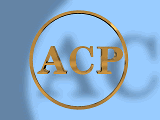American Catholic Press
16565 S. State Street, South Holland, Illinois 60473
|
||||||||||||||||||||||||
|
|
||||||||||||||||||||||||
|
by Bishop Donald Trautman We are mindful of efforts within the Church to revise the direction of Vatican II liturgical reform. In a December 28th [2001 interview, Cardinal Ratzinger stated the liturgical reforms of Vatican II need reform and the liturgy should return to more traditional practices. What does the Cardinal mean? Recent liturgical documents from Rome give us an indication. Where in the world do we have the largest number of people participating in weekly Eucharist? Not France, not Germany, not Spain, not England, not Italy, not South America. The Church in the United States, with Poland and Malta, ranks at the very top of the list. I think we Americans know something about liturgy and participation. Our voice should be heard. On December 4, 1963, Pope Paul VI and over2,000 bishops assembled in St. Peter’s Basilica solemnly promulgated the Constitution on the Sacred Liturgy—a new blueprint for the liturgical life of the Church. Thirty-nine years later we ask: How successful was this liturgical renewal? The Constitution on the Sacred Liturgy was the first pronouncement of the Council. Of all sixteen documents produced by Vatican II, the Constitution had the most immediate impact on the daily life of the Church. It made a difference directly in every parish. Every Sunday, Catholics began to experience the liturgical renewal launched by John XXIII and continued by Paul VI. We need to recall that the liturgical changes came for one primary reason: for the sake of “devout and active participation” by the faithful (#50, Constitution on the Sacred Liturgy). This document gave the Church a new liturgical norm to guide all renewal: “Full, conscious, and active participation” is the right and responsibility of every baptized person. Note that this is not merely recommended or desirable but demanded by the very nature of liturgy (Constitution, #14). The Mass belongs to the entire Church, not simply to clergy and religious.
Built on that theological foundation, the following achievements came from the
council and from post-conciliar reform: The restored Eucharistic liturgy and revised rites of the sacraments and RCIA are visible signs of the legacy of liturgical renewal. Thanks to the providential inspiration of the Holy Spirit at Vatican II, the Church of the third millennium possesses a rich liturgical inheritance—the results of successful liturgical renewal. What are the failures of the liturgical renewal and, therefore, our future challenges? We must first understand that all liturgical renewal is ongoing. There will never be a perfect, absolute liturgical rite; there will never be a perfect, absolute translation. Rites and translations are confected by humans and are, therefore, conditioned by culture, pastoral experience, theological insights, and ecclesiastical realities. To bring the mystery of God to the various times, temperaments and traditions of people will always require an ongoing liturgical reform. Thirty-nine years after the Constitution on the Sacred Liturgy, liturgical skirmishes still abound. Liturgical renewal remains a focal point for tension in the Church. But these skirmishes must never be center stage. The spotlight must always be on one basic question: Has the renewed liturgy renewed us? Have the revised rites and texts led to a transformation of people, a transformation of minds and hearts? Have we reached “full, conscious, and active participation”? Despite all the revision and reform, there is still a chasm of Grand Canyon proportion between the intended reality and our experience. There are parish communities and church groups that are still not renewed liturgically. Too often we have changed the rubrics but not the attitudes. I believe our greatest challenge for the future is to keep alive the spirit and vision of the Second Vatican Council for liturgical renewal. That council is fading away, both in time and influence. Voices are heard saying, “Reform the reform,” but we need to say, “Revitalize the reform.” We need the courage of the bishops at Vatican II to continue their plan of liturgical renewal. And we always need to stand up and be counted in our teaching and witnessing of the liturgical vision of Vatican II. Today centrist voices are not being heard, and so we witness a pullback from the openness of Vatican II. Liturgists must become more pro-active, writing articles and speaking out in public forums, so that liturgical reform may be properly understood and kept alive.
As we strive to meet these future challenges, let us be mindful of what Blessed
Pope John XXIII said: “In essential things, unity, in non-essential things,
freedom, and in all things, References: Excerpts from a talk given by Bishop Donald Trautman to the Southwest Liturgical Conference on 1/17/02 |
|||||||||||||||||||||||
|
||||||||||||||||||||||||
